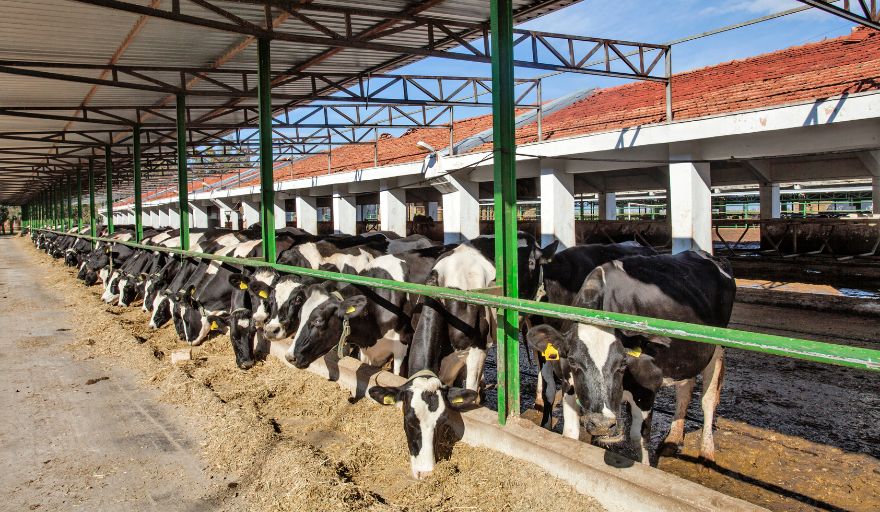Mastitis is one of the most common diseases of dairy cattle and is undoubtedly one of the main factors generating losses in dairy production.

These losses are primarily associated with a decrease in the quantity of milk produced and a decrease in its quality, increased medical costs and, consequently, herd depopulation. The most common cause of mastitis is pathogenic bacteria entering the udder sinus through the teat canal. Improper hygiene of the environment and the mammary glands during milking are the main factors responsible for mastitis. Mastitis manifests itself as swelling, tenderness or pain in the mammary gland, changes in the consistency of milk, including the presence of lumps, purulent or bloody discharge, fever or lack of appetite. We distinguish inflammation in clinical form (characterized by visible symptoms of the disease) or subclinical form (manifested by an elevated number of somatic cells in the milk while there are no visible symptoms in the udder and/or milk).
The main form of treatment of inflammation is antibiotic therapy (given by injection or injection) and administration of anti-inflammatory agents. For economic reasons, it is very rare to perform an antibiogram to select the right antibiotic for the bacterial strain that causes the inflammation in question. As a result, this leads to pathogenic microorganisms becoming resistant to antibiotic treatment. In addition, inflammation of the mammary gland tends to recur, making the effectiveness of treatment of the same disease case drop dramatically. The resistance of the bacteria that cause inflammation of the udder and the lack of sufficient resistance of the mammary glands to inflammation pose a very serious problem in dairy farming. In view of the above, it is crucial to look for new treatment methods as an alternative to antibiotic therapy and also to use preventive measures against mastitis.
There are two types of mastitis, depending on the source and mode of spread of the microorganisms. When the infection occurs in the nearest environment, we are dealing with environmental mastitis, for which the bacteria Escherichia coli and Streptococcus uberis are mainly responsible. The source of infectious mastitis, on the other hand, are microorganisms present on the tissues of the udder, which spread between individuals. In the case of such an infection, we are dealing primarily with strains of Staphylococcus aureus and Streptococcus agalactiae. Regardless of the type of spread of microorganisms, proper prophylaxis is very important, which consists of:
- Teat hygiene after each milking
- Therapy during the drying period
- Elimination of chronically ill animals from the herd
- Hygiene of the environment
- Cleaning and disinfection of milking equipment
- Performing vaccinations and using comprehensive infection control programs
A promising alternative in the treatment of mastitis are preparations containing silver nanoparticles, which, unlike antibiotics, rely on more than one mechanism to combat pathogenic microorganisms, which makes them characterized by high versatility of action against different bacterial strains.
Bibliography:
[1] P. Kosno, Control of inflammation due to Streptococcus uberis, “Breed with your head – cattle,” 2022, no. 4, pp. 74-76 74-76
[2] J. Mrowiec, How much does mastitis prevention cost?, “Grow with your head – cattle,” 2022, no. 1, pp. 87-88 87-88
[3] M. Jażdż, Mastitis management in practice, “Breed with your head – cattle,” 2022, no. 5, pp. 79-82 79-82
[4] A. Opałka, J. Twardoń, J. Król, E. Adamczyk, Use of nanosilver in the treatment of subclinical mastitis in cattle caused by Streptococcus uberis and Staphylococcus aureus, “Veterinary Science in the Field,” 2022, no. 1, pp. 70-73 70-73
[5] M.J. Green, L.E. Green, G.F. Medley, Y.H. Schukken, A.J. Bradley, Influence of Dry Period Bacterial Intramammary Infection on Clinical Mastitis in Dairy Cows, Journal of Dairy Science, Volume 85, Issue 10, 2002, Pages 2589-2599, ISSN 0022-0302